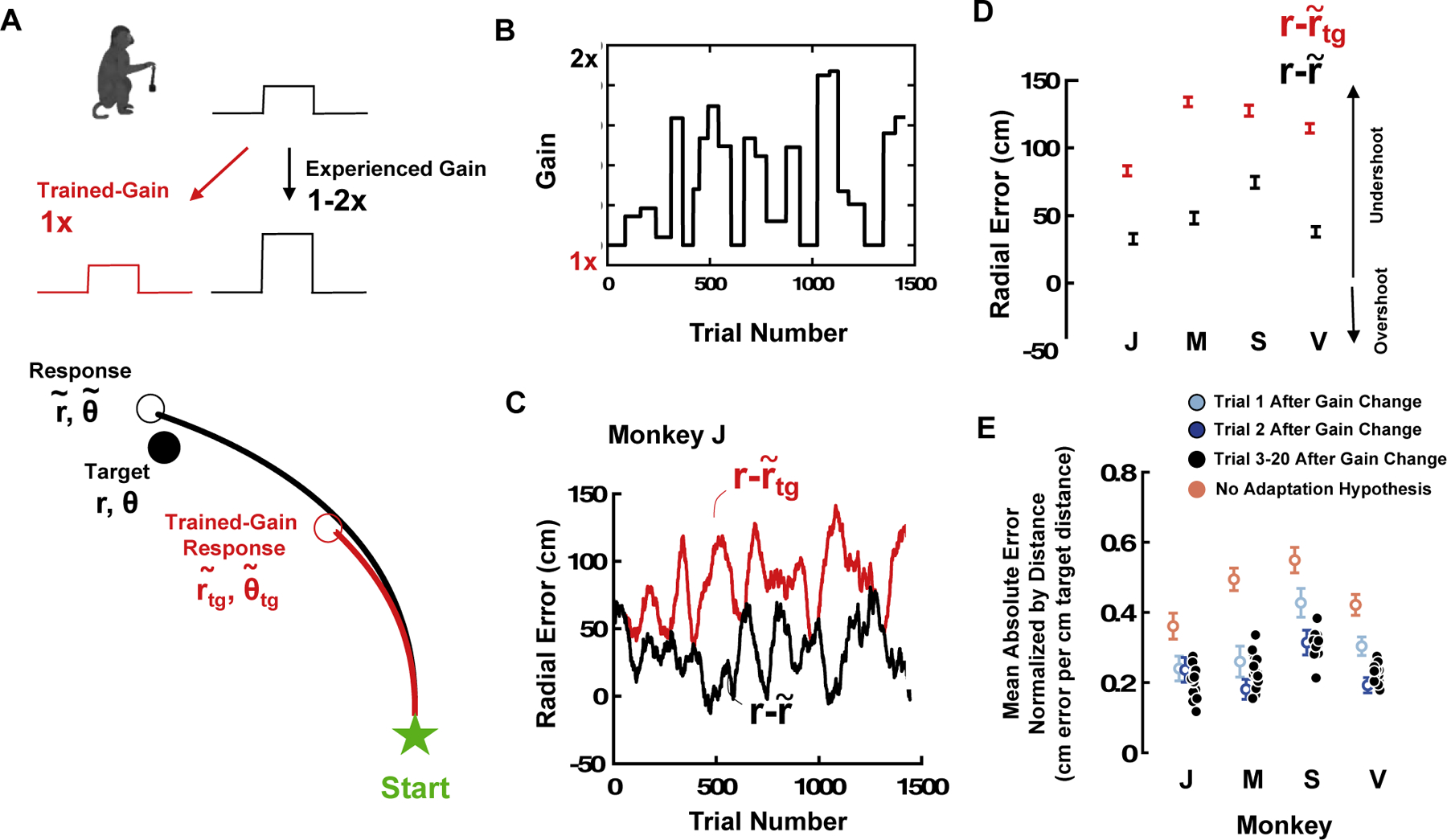Figure 3:

Gain Manipulation. (A) Animals were trained with a unique sensorimotor mapping (Trained-Gain, 1x) and then experienced gains that changed approximately every 50 trials and tiled the space from 1x (trained, red) to 2x (black). We compared the true error subjects made (lower panel, black, difference from r to ) vs. the error they would have made if using the gain they were accustomed to (lower panel, red, difference from r to ). (B and C) An example monkey (Monkey J) was able to quickly adjust its sensorimotor mappings, as shown by the fact that during the entire session the real gain (C, black) was smaller than what would have been predicted from the trained gain (C, red). The lack of covariance between gain changes and error suggests that the animal’s performance was not driven by changes in gain. The vertical shaded areas are time-periods of gain = 1x. (D) Average real radial error (black) and predicted if there were no sensorimotor adaptation (red) for all monkeys. (E) Examining the radial error on each trial as a function of trial number since gain change suggested that two monkeys (J and M) showed zero-shot learning, while another two (S and V) showed 1-shot learning. Y-axis is cm error per radial distance of targets (in cm; normalization is required given that error scales with distance and the distance of targets on first, second, etc., trial after gain change varied). Errors bars are +/− 1 S.E.M., red is the error predicted if animals would have used the gain they were trained with (1x), light blue is the average error on the first trial of a particular gain manipulation, dark blue is the second trial, and black are the rest (3–20).
